March 2017
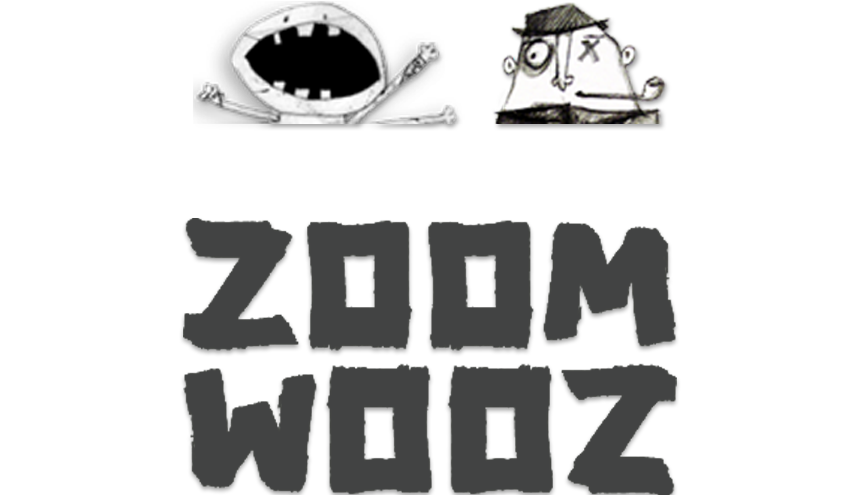



March 2017
KOREAN VERSION BELOW // 아래 한국어 버전
Karla Kracht and Andres Beladiez are a duo of interdisciplinary experimental artists who do mainly cinematic performance and installation. Karla, a German artist who majored in animation and illustration, has created various experimental video-based works and has been collaborating with Andres, a theatre director. The meeting between Karla, who drew or created animated characters and filmed their movement, and Andres, who produced interactive dramaturgies with viewers through various stage techniques, was very natural. As though a cute but bizarre character appears in a city like a monster and reveals the back side of modern people who calmly play a peaceful and beautiful life, their video performances disclose social and political problems facing modern people living today. What these two artists make together are things that belong to “stage,” “sculpture” or “installation” arts, but strictly speaking, they are closer to “apparat.” If so, what is the “apparat” for? Their works are represented by video images that move sequentially, being connected to computers that synchronize several cameras and projectors. Change of images are created by synchronized signals from image editors that move layers of timeline at high speed or from sensors that capture the movement of viewers. Characters in their works play disasters faced by the modern industrial society.
Vilem Flusser, a media philosopher in Germany, defines his camera as an “apparat” in his book on photography and notes that the Latin word of apparatus, the origin word of “apparat”, came from the verb apparare (prepare). He explains that the “apparat” is described as “a state of waiting for something in expectation” in the sense that a camera has the nature of a beast that bares its teeth and awaits its prey. The installation work of Karla and Andres is conceived as an apparat awaiting the movement of viewers. The apparat comes alive and moves like a scene of a fairy tale where a spell is broken and everything is awakened once a viewer appears. Flusser once said that the invention of cameras required artists to program the outer world as an act of art, and likewise, contemporary artists build a utopian interface through programming. This interface is not as simple as the camera device that he mentions. We are already in an era when we cannot see the back side of technologies that we as humans create. They just live their own lives as programs. We have entered an era where artificial intelligence outdoes humans through self-learning.
In Karla and Andres’ work, 2062, a huge city made of paper appears on the front of an image projection. Behind a forest of buildings in the giant city, a long-beaked bird drawn by Karla slips through somewhere either the sky or the background of buildings. Ceramic characters that look like small dolls face various situations in the dark and gloomy maze-like city. Following the movement of sensors synchronized with the movement of viewers, the camera projects images of specific situations and people in close-up on the stage: the World Trade Center reminiscent of the 9/11 terrorist attack, a young man in front of a tank at Tiananmen Square in 1989, and people facing the disaster of Fukushima nuclear power plant. The big-headed, alien-looking characters gaze with big and horrified eyes at the spectators who seem to be under the illusion that they are in the Kingdom of the Little People. The city full of buildings on the stage represents not just a specific city but all cities on the planet. Today, the world is rapidly urbanizing, and big and small events are happening every day in cities connected to the Internet. For Karla and Andres, a “city” is a “theater of disasters” that is confronted by a series of disasters.
금천예술공장 입주작가 비평문
연쇄적 재난 극장, 아포칼립스
백기영(서울시립미술관 학예연구 부장)
카를라 크라흐 & 안드레아스 벨라디즈(Karla Kracht & Andres Beladiez)는 영화적인 공연 퍼포먼스와 설치를 주로 하는 다원예술 실험 작가 듀오이다. 독일출신인 카를라는 애니메이션 과 일러스트레이션을 전공하고 영상을 기반으로 다양한 실험 작업을 하던 차 무대미술 연출가 인 안드레아스를 만나 서로 협업해왔다. 애니메이션 캐릭터들을 그려내거나 만들어 이들의 움 직임을 영상화하던 카를라에게 다양한 무대기술을 병행하면서 관람객들과 상호작용이 가능한 드라마투르기를 제작하던 안드레아스와의 만남은 매우 자연스러웠다. 귀엽지만 괴기스러운 캐 릭터가 괴물처럼 도시에 등장해서 평화롭고 아름답기만 한 삶을 태연하게 연기하고 있는 현대 인의 이면을 드러내는 것처럼, 이들의 영상 퍼포먼스는 지금 현재를 살아가고 있는 현대인들 이 직면하고 있는 사회정치적인 문제들을 폭로한다. 두 작가가 함께 만드는 것은 ‘무대’이기도 하고 ‘조각’ 이거나 ‘설치’ 영역에 속하는 것들인데, 엄밀한 차원에서 보면 ‘장치(Apparat)’에 가깝다. 그렇다면, 무엇을 위한 ‘장치’ 일까? 그들의 작품은 영상 이미지로 표현되는데, 여러 대의 카메라와 영사기를 동조하는 컴퓨터에 의해서 연결되어 순차적으로 움직인다. 이미지의 변화는 타임라인의 여러 레이어를 빠른 속도로 이동한 영상 편집기나 관람객의 움직임을 포착 하는 센서의 신호들이 동조되어 생산해낸 결과다. 그들의 작업에 등장하는 캐릭터는 현대 산 업사회가 직면하고 있는 재난을 연기하고 있다.
독일의 미디어 철학자 빌렘 플루서(Vilem Flusser)는 사진에 대해서 쓴 그의 책에서 카메라 를 하나의 ‘장치’로 보았는데, 장치의 어원인 라틴어 ‘apparatus’는 동사 ‘apparare(준비하 다)’에서 유래했다고 말했다. 그런 측면에서 ‘장치’는 ‘어떤 것을 예기하면서 기다리는 하나의 사태’라고 설명하면서 카메라는 이빨을 드러내고 먹이를 기다리고 있는 맹수의 본성을 갖고 있다고 말했다. 이처럼 카를라와 안드레아스의 설치작업은 관람객의 움직임을 기다리고 있는 장치로 고안되었다. 관람객의 등장으로 모든 것들이 마법에서 깨어나는 동화 속의 한 장면처 럼 이 장치는 살아서 움직인다. 플루서가 카메라의 발명이 예술가에게 있어서 외계 세계를 프 로그래밍하는 작업을 예술행위로 요구한다고 말한 것처럼, 오늘날 동시대 예술가는 프로그래 밍을 통하여 하나의 유토피아적인 인터페이스를 구축해 낸다. 이 인터페이스는 플루서가 말했 던 카메라 장치처럼 단순하지가 않다. 우리는 이미 인간이 만들어낸 기술의 이면을 읽어 낼 수 없는 시대를 살고 있다. 그들은 그저 프로그램에 의해서 독자적인 삶을 살아갈 뿐이다. 이 미 인공지능이 자기 학습을 통해서 인간의 능력을 초월하는 시대가 되었다.
그들의 작업 <세라믹 라이브 시어터 2062>에는 종이로 만들어진 거대 도시가 영상프로젝션의 전면에 등장한다. 거대도시의 빌딩 숲 뒤로는 카를라가 그린 부리가 긴 새가 하늘인지 건물들 의 배경인지를 미끄러지듯 빠져나간다. 어둡고 암울하게 미로처럼 복잡한 도시에는 작은 인형 같은 세라믹 캐릭터들이 여러 상황에 직면해 있다. 관람객의 움직임에 의해서 동조되는 센서 의 움직임을 따라 카메라는 특정 상황을 영상에 등장시킨다. 911 테러를 연상시키는 월드 트
-1-
레이드 센터, 1989년 중국 천안문에서 탱크에 맞섰던 청년의 모습, 후쿠시마 원전의 재앙에 직면한 사람들이 클로즈업된다. 머리가 크고 외계인처럼 생긴 캐릭터들은 공포에 질린 커다란 눈을 들어 소인국에 들어서 있는 것 같은 착각을 하고 있는 관람객을 바라보고 있다. 무대에 오른 건물들이 가득 차 있는 도시는 어느 한 도시가 아니라, 지구상의 모든 도시를 대변하고 있다. 오늘날 전 세계는 빠른 속도로 도시화 하고 있으며 인터넷 통신망으로 연결된 도시에서 는 크고 작은 사건들이 매일같이 발생하고 있다. 카를라와 안드레아스에게 있어서 ‘도시’는 이 런 재난이 연쇄적으로 발생하는 하나의 ‘재난 극장’이다.
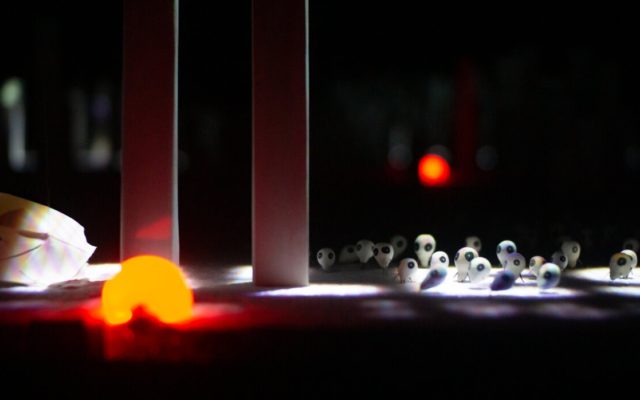
6º below nothing
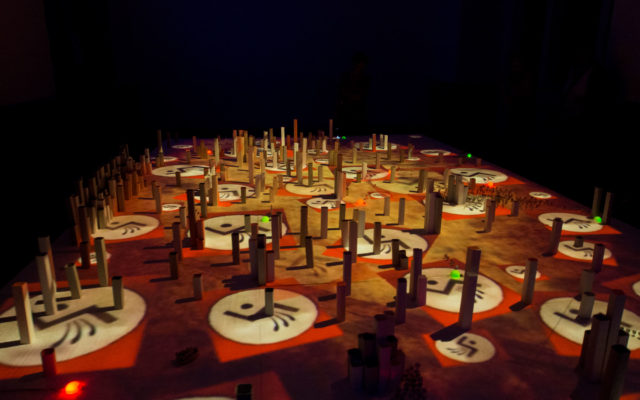
6º below nothing
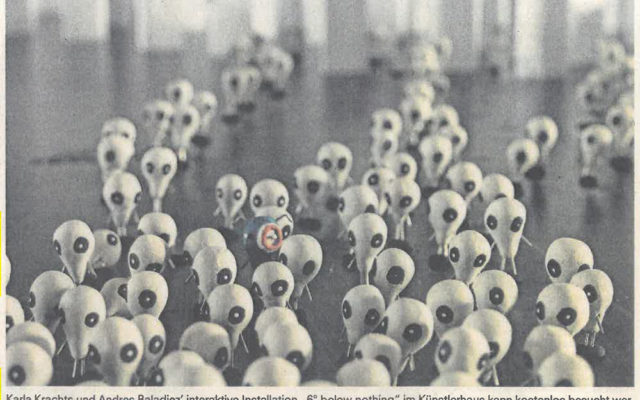
6º below nothing
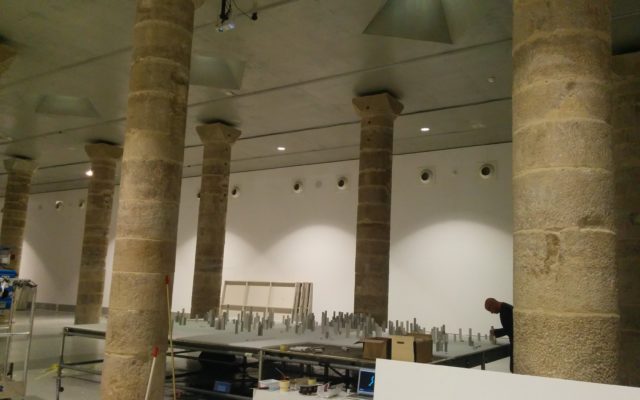
6º below nothing
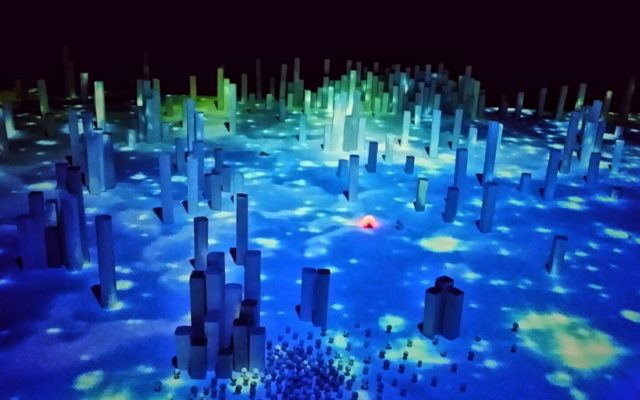
6º below nothing
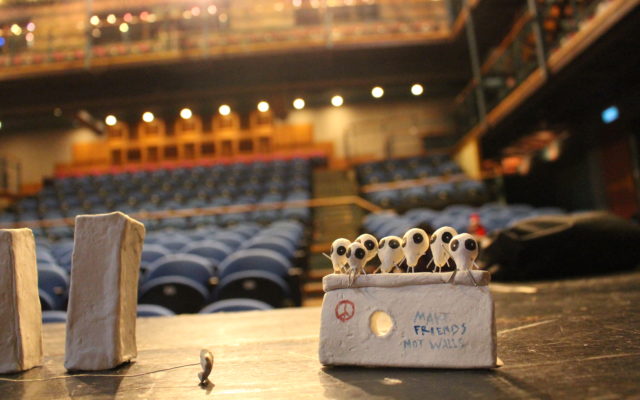
2062

Leave a Comment